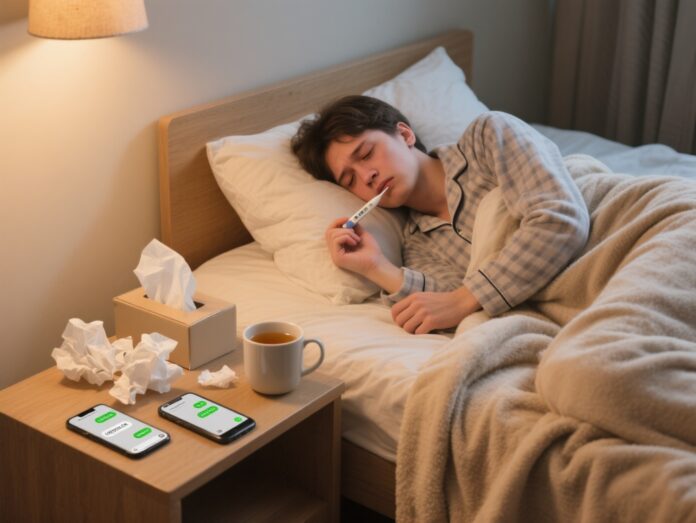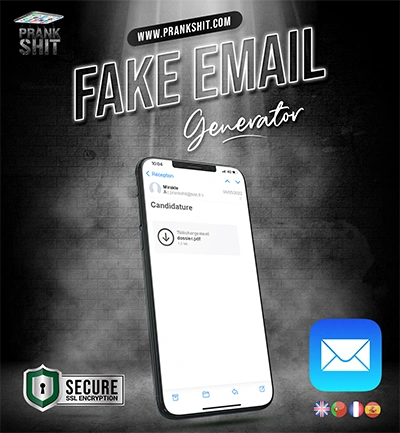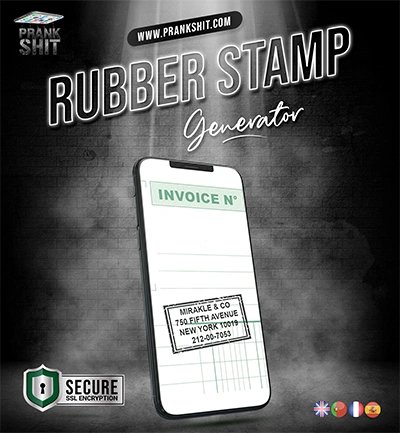We’ve all been there. Monday morning rolls around, and suddenly the thought of facing another day at work, school, or that family dinner feels absolutely unbearable. Your brain starts scheming: “What if I just… wasn’t feeling well today?”
Before you dismiss this as completely unethical, let’s be honest—sometimes we all need a mental health day. Society hasn’t quite caught up to accepting “I need to recharge my emotional batteries” as a legitimate reason to call out. While we’re not advocating for chronic dishonesty, there are moments when knowing how to fake sick convincingly can be a surprisingly useful life skill.
This guide will walk you through the art of believable illness simulation — from choosing the right symptoms to executing your performance flawlessly. Think of it as emergency knowledge, like changing a tire or performing CPR: you hope you won’t need it, but when you do, you’ll be glad you learned.
The key to successfully learning how to fake sick lies in three principles: subtlety, consistency, and timing. Master these elements, and you’ll have the perfect escape plan for those days when life feels overwhelming.
The Psychology of Playing Sick Successfully
Understanding the psychology behind believable illness simulation is crucial for success. People expect sick individuals to behave in predictable ways, and your job is to meet those expectations without overdoing it.
The biggest mistake amateur fake-sick performers make is being too dramatic. Real illness rarely looks like a Hollywood movie. Genuine sick people are typically understated, slightly apologetic about their condition, and focused on getting better quickly. They don’t oversell their symptoms or provide excessive detail about their suffering.
Timing plays a critical role in how to fake sick effectively. The most believable illnesses have a logical timeline. You can’t go from perfectly healthy on Friday afternoon to deathly ill on Monday morning without raising suspicions. Smart practitioners begin laying groundwork 24-48 hours in advance, mentioning feeling “a bit off” or “hoping they’re not catching something.”
Consider your audience carefully. Your boss, teacher, or family members all have different expectations and levels of skepticism. A helicopter parent might require more convincing evidence than a busy manager who just wants to know you won’t be spreading germs around the office.
Consistency across all interactions is non-negotiable. Your voice, energy level, and symptoms must align whether you’re texting, calling, or being seen in person. One moment of forgetting your “illness” can unravel the entire performance.
Best Symptoms to Simulate for Maximum Believability
When selecting which ailment to fake, choose symptoms that are difficult to verify medically but easy to portray convincingly. Here are the most effective options for how to act sick without getting caught.
Headaches and Migraines
Headaches are perfect fake sick tricks because they’re invisible, common, and can vary dramatically in severity. They explain why you might seem tired, speak quietly, or be sensitive to light and sound. When discussing your headache, mention it’s been building gradually and that you’ve tried basic remedies like water and pain relievers without success.
The beauty of headache simulation lies in its simplicity. You don’t need to remember complex symptoms or maintain elaborate physical performances. Simply speak more softly than usual, occasionally rub your temples, and express mild sensitivity to bright lights or loud noises.
Stomach Issues
Digestive problems are among the best excuses to miss school or work because they’re incredibly common and nobody wants graphic details. Stomach troubles also provide built-in urgency—you might need to leave suddenly or stay close to bathroom facilities.
When pretending to be sick with stomach issues, less is more in your descriptions. A simple “I’ve been having stomach problems all morning” is far more believable than elaborate descriptions of symptoms. Real people with stomach issues are typically embarrassed and want to keep details private.
Extreme Fatigue and General Malaise
Sometimes the most effective approach to how to fake a fever or illness is avoiding specific symptoms entirely. General exhaustion paired with feeling “run down” or “under the weather” creates a believable scenario that’s hard to disprove.
This approach works particularly well because modern life naturally leads to fatigue. Your audience can easily relate to feeling completely drained and needing recovery time. Emphasize that you feel it would be irresponsible to push through and potentially make things worse.
Sore Throat and Voice Issues
A scratchy or hoarse voice provides excellent audio evidence of illness during phone calls. This symptom is easy to fake temporarily and explains why you might not want to talk much or attend verbal presentations.
Practice speaking in a slightly strained voice—not dramatically different, just enough to suggest throat irritation. Mention that swallowing is uncomfortable and you’re worried about it developing into something more serious.
Mild Cold Symptoms
Seasonal sniffles and minor congestion work well because they’re incredibly common and socially responsible to keep to yourself. These symptoms are easy to maintain consistently and don’t require dramatic physical performances.
The key with cold symptoms is moderation. Real colds develop gradually and people function somewhat normally in early stages. Avoid the temptation to add dramatic coughing or excessive sniffling that might seem theatrical.
Mastering the Performance: Your Action Plan
Successful illness simulation requires careful planning and flawless execution. Here’s your step-by-step guide to how to call in sick believably.
Preparation Phase (24-48 Hours Before)
Start laying groundwork subtly. Mention feeling slightly tired, express concern about a bug going around, or comment that you hope you’re not getting sick. These casual mentions create a believable illness trajectory and demonstrate you’re not making last-minute excuses.
Check your schedule and choose your sick day strategically. Avoid major deadlines, important meetings, or days when your absence would create significant problems. This shows consideration and makes your request seem more legitimate.
Prepare your environment if there’s any chance of being seen. Comfortable clothes, tissues nearby, and a general “resting” atmosphere all support your narrative. Remove any evidence of activities incompatible with illness, like workout clothes or party supplies.
The Morning of Your Sick Day
Time your communication appropriately. Contact work or school early enough to be considerate but not so early that you seem to have planned this extensively. Most legitimate sick calls happen within 1-2 hours of expected arrival time.
Your voice and energy should match your claimed symptoms from the first interaction. If you’re faking a sore throat, your voice should sound strained from your first phone call. Consistency from the beginning prevents suspicion later.
Keep your explanation brief and avoid over-sharing. “I woke up feeling terrible and don’t think I should come in today” is more believable than a detailed medical report. Real sick people want to rest, not provide extensive symptom descriptions.
Communication Strategy
Master the art of the sick voice for phone calls. Practice speaking slightly more quietly than usual, with occasional pauses as if you’re tired or in discomfort. Don’t overdo it—subtle changes are more convincing than dramatic vocal performances.
Text messages should reflect your low energy state. Shorter responses, less punctuation, and delayed reply times all suggest you’re not feeling well. A simple “Not feeling great today, staying home to rest” works better than elaborate explanations.
If video calls are necessary, position yourself thoughtfully. Dim lighting, comfortable clothes, and a slightly tired appearance support your narrative without seeming theatrical. Keep interactions brief and express appreciation for understanding.
Pro-Level Digital Evidence Creation
For those wanting to elevate their sick day game to professional levels, creating supporting digital evidence can add convincing authenticity to your story. This is where pretending to be sick enters the digital age.
Modern situations sometimes call for modern solutions. Maybe you need a missed call from a doctor’s office, a text from a concerned family member, or evidence of trying to find medical advice online. These digital breadcrumbs can support your narrative if questioned later.
Prankshit.com offers realistic tools for generating believable digital evidence. You can create fake text conversations showing a family member checking on your health, missed calls from medical offices, or even WhatsApp exchanges discussing your symptoms. The screenshots look completely authentic and can provide that extra layer of credibility if your story needs support.
The platform’s generators are incredibly detailed, allowing you to customize everything from contact names to message timestamps. This means you can create a realistic digital trail showing the progression of your “illness”—perhaps a text to your mom saying you don’t feel well, followed by her reply with home remedy suggestions.
Remember, these tools are designed for harmless pranks and should be used responsibly. The goal is creating believable scenarios for occasional mental health breaks, not manipulating people for serious gain or causing real harm to others.
What Not to Do: Common Mistakes That Get You Caught
Understanding how to fake sick also means knowing what not to do. These common errors can expose your deception immediately.
Never oversell your symptoms. Real illness is usually uncomfortable but manageable, not dramatic or theatrical. Avoid excessive groaning, overly detailed symptom descriptions, or behavior that seems like you’re auditioning for a medical drama.
Don’t post on social media during your sick day. This seems obvious, but many people forget about automatic check-ins, photo tags from friends, or background activity that might reveal you’re not actually bedridden. Either stay completely offline or carefully manage your digital presence.
Inconsistency kills credibility faster than anything else. If you claim a headache in your morning call but mention stomach issues later, people will notice. Choose your symptoms early and stick to them throughout the entire day.
Avoid being seen in public unless absolutely necessary. That includes grocery stores, coffee shops, or anywhere you might encounter coworkers or classmates. If you must go out, dress appropriately for someone who’s unwell and be prepared to explain if confronted.
Don’t make your recovery too miraculous. Feeling significantly better the next day is fine, but posting workout photos or staying out late immediately after your sick day raises red flags. Allow for a reasonable recovery period that matches your claimed illness.
The Ethics of Strategic Sick Days
While this guide focuses on practical execution, it’s important to address the ethical considerations around how to fake sick at work or school.
Mental health is real health, and sometimes we need breaks that traditional sick day policies don’t acknowledge. If you’re using fake illness as an occasional mental health strategy, that’s understandable. However, this approach shouldn’t become a regular habit that affects your reliability or others’ workload.
Consider the impact on others. Will your absence create significant problems for coworkers, teammates, or students depending on you? If so, try to find alternative solutions or time your mental health day more thoughtfully.
Be especially careful in professional environments where trust is crucial. Reputation damage from being caught in a deception can have long-term career consequences that far outweigh the benefits of a single day off.
Use this knowledge as emergency backup, not a primary strategy. Developing better communication skills, negotiating flexible arrangements, or addressing underlying stress issues are more sustainable long-term approaches.
Alternative Strategies Worth Considering
Before resorting to deception, explore legitimate alternatives that might achieve the same goal.
Many workplaces and schools now recognize mental health days as valid reasons for absence. Having an honest conversation about needing time to recharge might be more acceptable than you think.
Personal days, flexible scheduling, or working from home might address your needs without requiring dishonesty. These options preserve your integrity while still providing the break you need.
If you’re consistently feeling the need to fake illness, that might indicate larger issues with work-life balance, job satisfaction, or stress management that deserve attention.
Building a reputation for reliability makes occasional legitimate sick days less suspicious. People who rarely call out are given more benefit of the doubt when they do need time off.
Your Backup Plan for When Things Go Wrong
Even perfect planning can sometimes fail. Here’s how to handle situations when your fake illness performance gets questioned.
Stay calm and stick to your story if confronted directly. Defensive reactions or changing details will confirm suspicions. Simple responses like “I’m sorry you feel that way, but I really wasn’t feeling well” work better than elaborate justifications.
If you’re caught definitively, honest acknowledgment usually works better than continued denial. Apologize, take responsibility, and commit to better communication in the future. Most people appreciate honesty and will respect your accountability.
Learn from close calls or failures. What gave you away? How can you improve your approach for future emergencies? Each experience teaches valuable lessons about believable performance.
Have legitimate backup plans ready. Maybe you can honestly say you needed mental health time, were dealing with family stress, or required time to handle personal issues. Truth often sounds more believable than fiction.
Finding Balance: When Strategic Dishonesty Serves Mental Health
Sometimes knowing how to fake sick serves a greater purpose than simple avoidance. Life can be overwhelming, and occasionally we need emergency escapes from situations that genuinely threaten our mental well-being.
The key is using these skills thoughtfully rather than reflexively. Ask yourself whether the situation truly requires deception or if honest communication might work better. Consider the long-term consequences of your choice and whether this action aligns with your values.
Remember that rest and self-care are legitimate needs, even if they’re not always recognized by traditional structures. Taking care of your mental health benefits everyone around you, including the people you might be temporarily deceiving.
Use fake sick days as breathing room to address underlying issues, not as permanent solutions to ongoing problems. If you find yourself regularly needing these escapes, it might be time to make bigger changes in your life.
Ultimately, the goal isn’t to become a master manipulator but to have emergency options when life becomes temporarily unmanageable. Everyone deserves the occasional mental health break, even if society hasn’t quite caught up to acknowledging that truth officially.
Your mental health matters, your well-being is important, and sometimes the system requires creative navigation. Use these skills wisely, sparingly, and always with consideration for others. After all, the best fake sick day is the one you never actually need to use.




